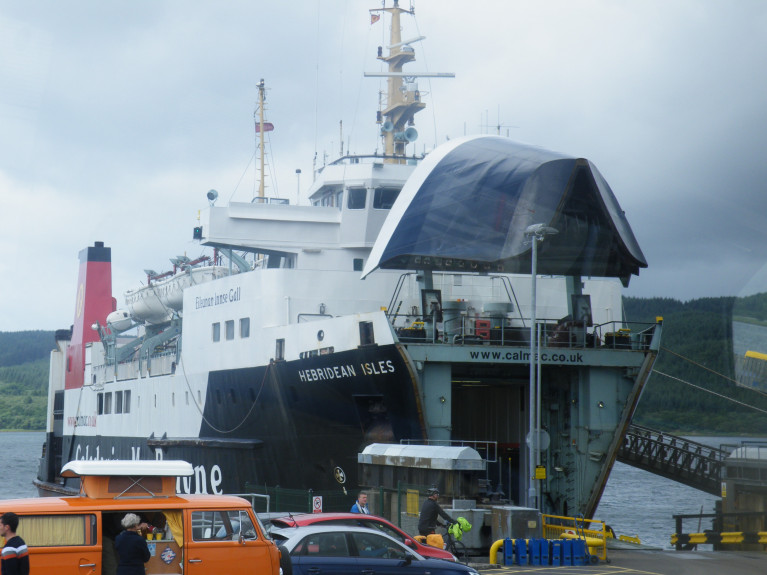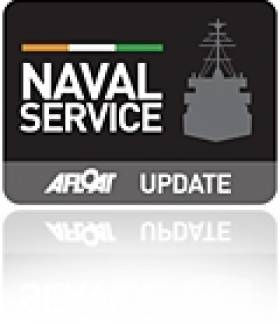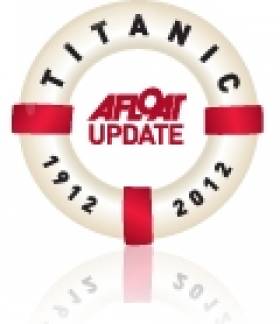Displaying items by tag: shipyards
Proud Scottish Ferry Industry Buffeted by Failure
Vessels carrying passengers were once built to last, now under the Scottish National Party (SNP) they are not being built at all.
The operator at the heart of Scotland’s west coast ferry crisis, Caledonian MacBrayne (CalMac), has been around for much longer than most Scots realise.
Today’s CalMac can trace its roots back to the middle of the 19th century when the ship-owning brothers George and James Burns struck a succession deal.
They were the Burns of Burns & Laird Line, whose steamers linked ports such as Liverpool and Glasgow with Belfast right up to the 1970's.
But the deal George Burns did in 1851 was to secure the future of G & J Burns’s local coastal ferry services between Scotland’s western seaboard and its numerous island communities.
The brothers sold that Scottish arm of their business to David Hutcheson, the chief clerk.
The Times has more on the story.
Harland & Wolff, the iconic shipyard with over 160 years of maritime and offshore engineering pedigree has announced it has been awarded a contract by Saipem Limited for the fabrication and load-out of eight wind turbine generator (WTG) jacket foundations.
The jacket foundations will service the EDF Renewables and ESB owned Neart na Gaoithe Offshore Wind Farm project located in the outer Firth of Forth in Scotland. The contract schedule is due to commence from 1 July 2021 and is anticipated to create around 290 direct and indirect jobs.
The works for fabrication, consolidation and load-out of the eight WTG jacket foundations will principally be conducted at Harland and Wolff’s newly acquired Methil facilities in Scotland. Should there be an opportunity to further optimise the works programme and make the contract more cost-effective, Harland & Wolff and Saipem will work jointly to spread additional workstreams within the contract across its three other sites in Belfast, Arnish and Appledore.
With its unrivalled UK fabrication facilities, Harland & Wolff’s multi-site approach can reduced fabrication timelines by as much as 30% - offering project developers a faster route to project monetisation and de-risking fabrication projects by spreading work across three distinct but close-proximity geographies.
Harland & Wolff’s four sites offer a combined footprint of over 334.6 hectares, with well over 72,000m² of undercover fabrication capacity. Belfast comprises two of the largest drydocks in the UK, second largest in Europe, each at 356 metres and 556 metres in length whilst Arnish boasts the largest fabrication hall in Europe. Both the Arnish and Methil sites offer 580,000m² of total site area and 24,000 tonnes of quayside load-out capabilities, boasting an annual throughput tonnage estimated at over 100,000 tonnes.
John Wood, CEO of InfraStrata, commented: “We are delighted to have entered into this contract with Saipem and I believe that this contract paves the way for the execution and delivery of future fabrication contracts, a significant number of which are currently in advanced negotiations.
The geographical proximity of our Methil facility to the North Sea makes it an ideal site for fabrication and load-out to wind farm projects such as this. More importantly, it validates our strategic vision of expanding the Group’s fabrication footprint into regions that are strategically located within proximity to major wind farm projects. This will enable us to spread workstreams across our facilities to drive down costs, deliver against tight schedules and, crucially, align ourselves to the government’s goal of providing wind generated power to all homes in the UK by 2030.
I am confident that this is only the beginning of a stream of projects in our pipeline that we expect to come to fruition. We are hugely excited about the massive potential that this first contract has unlocked, and we look forward to working with Saipem to successfully deliver under it.”
Harland & Wolff is a wholly-owned subsidiary of InfraStrata plc (AIM: INFA), a London Stock Exchange-listed firm focused on strategic infrastructure projects and physical asset life-cycle management.
Harland & Wolff is a multisite fabrication company, operating in the maritime and offshore industry. Its Belfast yard is one of Europe’s largest heavy engineering facilities, with deep water access, two of Europe’s largest drydocks, ample quayside and vast fabrication halls. As a result of the acquisition of Harland & Wolff (Appledore) in August 2020, the company has been able to capitalise on opportunities at both ends of the ship-repair and shipbuilding markets where this will be significant demand.
In addition to Harland & Wolff, it owns the Islandmagee gas storage project, which is expected to provide 25% of the UK’s natural gas storage capacity and to benefit the Northern Irish economy as a whole when completed.
#OPVnewbuilds – L.E. Samuel Beckett, the first of a pair of newbuild OPV vessels under construction for the Naval Service was floated-out earlier this month from a north Devon shipyard, writes Jehan Ashmore.
As previously reported on Afloat.ie, the floating-out of the newbuild OPV PV90 class (enhanced Roisin-class) was deferred to this month. Originally it was planned to have taken place the proceeding month from Babcock Marine's shipyard in Appledore.
L.E. Samuel Beckett is expected to be delivered by March 2014. She is a direct replacement of the former L.E. Emer whose adopted 'homeport' was Cork City. Speculation as to if the newbuild will take her predecessor's homeport remains the decision of the Department of Defence.
Yesterday the 'Emer' departed the Naval Base on Haulbowline Island to nearby Cork Dockyard where her owners, Uniglobe Group are to upgrade the vessel for her new role in the Niger Delta.
The 89m L.E. Samuel Beckett is to be followed by the second OPV L.E. James Joyce and likewise this newbuild is to be delivered a year apart in early 2015.
As previously reported in May 2012, senior representatives of the Naval Service and the Department of Defence attended the ceremony at the UK shipyard which won the €99m contract in 2010 to build the pair. Notably the PV90's are to feature drones or "unmanned aerial surveillance vehicles" and robotic submersibles.
The same shipyard near Bideford, also built sections for the first of a pair of new Royal Navy QE-class aircraft-carrier, HMS Queen Elizabeth. On Monday the final module of the 'ski-ramp' for the ship's massive hull was slotted into place at Babcock Marine's Rosyth dockyard.
#TITANIC - A Belfast man who saw the Titanic launch from the Harland and Wolff shipyards more than 100 years ago was guest of honour at the opening of Titanic Belfast at the weekend.
"It's like our Sydney Opera House," 105-year-old Cyril Quigley told BBC News of the £97 million (€116.7 million) visitor centre, opened on the 100th anniversary of the infamous ocean liner's tragic demise.
"My father and mother took me to Workman and Clark shipyard which is on the opposite side [of Belfast Lough] to watch the launch," he recalled to the Belfast Telegraph.
"I just saw a mass of metal in the gantries that they built for it and all I saw was this big thing sliding out into the water. I was only four-and-a-half."
Quigley described the new facility - designed to echo the imposing bow of the Titanic - as "wonderful", a sentiment echoed by Belfast Lord Mayor Niall O'Donnghaile who said: "The Titanic belongs to Belfast but this spectacle - Titanic Belfast - belongs to the world."
First Minister Peter Robinson was joined by Deputy First Minister Martin McGuinness at the ribbon cutting ceremony on Saturday 31 March, with the former declaring that this is "a new era in this province".
Titanic Belfast is expected to attract more than 400,000 visitors in its first year, and some 100,000 people have already purchased tickets. It will also be one of the largest employers and recruiters in Northern Ireland's tourism industry, as previously reported on Afloat.ie.
But the public's reaction so far has been mixed, according to The Irish Times, with some expressing disappointment at the lack of any large-scale model of the ship, and that the replica of the ship's famous staircase is hidden from public view in the venue's banqueting hall.


























































